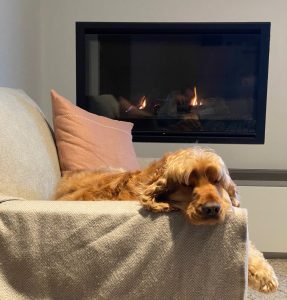13 Steps to Reduce Fire Risk in Your Home
 One of the greatest dangers at home remains the risk of a fire breaking out. Between flammable liquids, electrical power outlets, cookers (and the kitchen in general), as well as the number of wires that the typical home now has, there’s a nearly unlimited number of potential sources of catastrophic fires. This is why fire safety at home is so important.
One of the greatest dangers at home remains the risk of a fire breaking out. Between flammable liquids, electrical power outlets, cookers (and the kitchen in general), as well as the number of wires that the typical home now has, there’s a nearly unlimited number of potential sources of catastrophic fires. This is why fire safety at home is so important.
Fire Safety At Home
So what can people do to protect their home from these fires? As it turns out, plenty.
- Have your heating system serviced regularly by a professional. It goes with the territory; heating is a source of both ignition (heat), and often flammable material.
- Try not to use outlet extenders too much. As convenient as they can be, the more appliances you have plugged into a single outlet, the greater the risk of overheating, and thus fire.
- Store flammables well away from the stove, especially cooking oil. Unattended oil close to a stove can easily flare up if left unattended. These fires can also be more difficult to put out, so minimising that risk is essential.
- If you’re a smoker, be sure to properly extinguish smoking materials. It’s a good idea to soak them in water. Smoking materials that are not properly extinguished can smoulder for far longer than you might expect before starting a fire, often for days.
- If you’ve got portable heaters, keep them away from flammables like curtains or other materials, and place them in areas where they won’t be knocked over. This is especially applicable for people with pets.
- Yes, smoke alarms are annoying, especially when they go off by accident and fill the neighbourhood with their piercing noise. However you should still install them in every room on every door. That warning that they provide could well mean the difference between a manageable fire, and one that burns down your home and puts your family at risk.
- If you have electric blankets, or other “warming” devices, then make sure you get them serviced and checked regularly. Once again, the fact that they’re heating objects also means that they are a potential fire hazard.
- Check any gas sources that you have regularly. If flames that should be blue are burning orange, it might be a sign that there’s a buildup of carbon monoxide. This is incredibly dangerous! Get this checked immediately.
- If you do suspect a gas leak, then it’s really important that you open the windows, turn the gas off at its source, and call the gas supplier. Until it has been checked, do not operate switches, as a spark could ignite a fire.
- If you’ve got children, then you’re going to need to be extra careful with cords and the like. Even the more innocent activities that a child might get up to, such as yanking a cord out of a socket, might be a potential source of fire. Parents are really good with protecting their children from knives or hazardous materials like drugs, however power cords are not something that people would usually think about, until a yanked cord out of the TV has started a fire.
- Minimise the number of flames in the home. Yes, candles are a beautiful aesthetic, and open fires can both relax and warm the household. But, a lot of that is a placebo effect. A battery-operated “fake” candle can provide much the same visual effect, far more safely. And, if you must have an open flame, never light a candle and leave the flame unattended by moving into another room. Make sure you properly put the flame out, too.
- Do not place clothing on, or close to, heaters to dry or warm them. We all love the feeling of warm clothing on the body. Especially on a cold morning. But it’s not a good idea to do so by placing the clothing on a heater. This is inviting the clothing to catch on fire.
- Have an exit plan, and make sure the entire family has it rehearsed. Each person in the family should know instantly what they need to do in the event of a fire. It can feel silly rehearsing fire alarms (who hasn’t been irritating when their office block or building holds fire exercises), but it’s important, so that in the unlikely event of a fire, people know what to do. It’s no different for families, so hold those rehearsals. A fire escape screen on your window is a great way to ensure an easy exit out the window in the case of a fire.
Taking small steps to ensure your family’s safety
Over 50 people die from fire in the home each year. It’s tragic, and in a great many cases, these deaths would be preventable, or at least far less likely. Households are filled with fire risks, and often people don’t even realise the risks that they’re exposing themselves to. These 13 tips and tricks above might seem simple and logical, but if you were to survey your home, you might just discover that some of them apply to your home as well. How is fire safety looking at your home?



Share